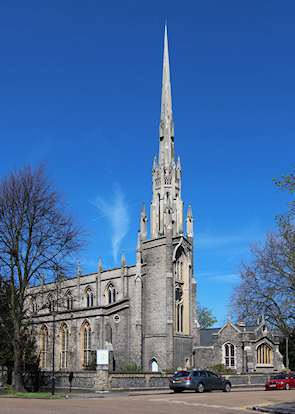Blackheath Park
Blackheath Park, Greenwich
A late Georgian and early Victorian private estate situated south-east of Blackheath village, bordering Kidbrooke

Blackheath Park is also known as the Blackheath Cator estate, after Bromley businessman John Cator, who bought the land cheaply and demolished Wricklemarsh House, a classical mansion built for Sir Gregory Page by John James, who had worked with Hawksmoor and Wren. After Cator died in 1806, his heirs began to sell off plots of land and Blackheath Park took shape during the 1820s and 1830s.
Another flurry of building followed in the late 1850s and again in the 1930s, when the expiry of leases removed constraints on infilling. The Cators installed lodges at the main entrances to the estate and granted land for St Michael and All Angels church, and later for the Conservatoire and Blackheath Halls.
After the Second World War the local authority and the London County Council compulsorily purchased several plots and put up blocks of flats, but resistance by preservation groups reduced the intended scale of development. The Cator estate retained its private status, with the municipal authorities contributing to the freeholder’s maintenance fund.
Private housing schemes, principally by Span Developments Ltd, also resulted in the demolition of original properties, mainly between 1957 and 1965. Although the Span houses encountered opposition at the time, they have since been widely acknowledged as representing the best in contemporary design.
In 1965 the local residents’ association took over the ownership of the roads and the administration of the estate from the Cator family trustees. The association converted to a limited company in 1985 and in this form it levies an estate charge on individual properties to cover the cost of road maintenance and of improvements to pavements, street lighting and drainage. The company restricts access to the estate’s roads, which is why you can’t tour Blackheath Park via Google Street View. Greenwich council declared Blackheath Park a conservation area in 2002.
The philosopher John Stuart Mill lived at 113 Blackheath Park for 20 years and wrote On Liberty and Utilitarianism here.
Blackheath Park’s other distinguished residents have included Richard Bourne, who founded P&O, Mappin the cutler, Barrow the wine merchant, and Yarrow the shipbuilder.
